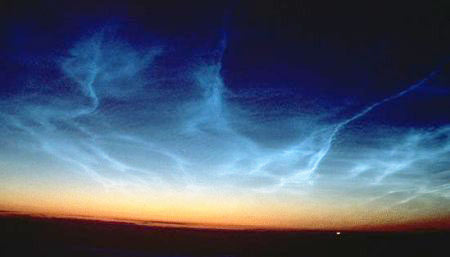Black holes seem to control galaxy development
BY ERIC HAND
St. Louis Post-Dispatch
ST. LOUIS - Black holes need an image makeover.
It's tough to feel warm and fuzzy about an infinitely
dense object that holds light hostage, a dead star that
would rip your feet from your head if you came within a
few thousand miles of it.
But it turns out that the bete noires of our universe
aren't so beastly. New research suggests they are triggers
for galaxy development - nurturing nannies for star
systems.
"They're not just Shiva the Destroyer; they're Brahma the
Creator," said Scott Hughes, a black hole expert at the
Massachusetts Institute of Technology.
And they aren't so black, either. Matter that doesn't fall
in gets shot off at near-light speeds in bright,
superheated plasma jets. On top of that, Albert Einstein's
theories say black holes should be creating gravitational
waves, tiny ripples in space that astronomers are trying
to detect, in what could become a new way of doing
astronomy.
First, a quick primer on the two types of black holes.
One type results when stars just a bit bigger than our sun
run out of fuel. (Our sun is destined to become a white
dwarf).
Without the outward pressure of nuclear fusion, the
crushing weight of all that mass turns in on itself and
shrinks to an infinitely dense point. Around that point is
a black sphere of influence known as the event horizon,
the boundary from which even light can't escape.
The second type of black hole - a supermassive black hole
- has devoured the mass of millions or billions of suns.
Astronomers have only discovered a few dozen super massive
black holes, but the consensus is they sit at the center
of every large galaxy. These grow as galaxies merge and
the holes gather up new stars and other black holes.
Washington University physicist Clifford Will is
interested in the special case of binaries - two black
holes orbiting each other in a death spiral.
Einstein's theories say the holes, as they fall into each
other's grip, should emit gravitational waves that
undulate away at the speed of light. These waves have
momentum. Will calculated the equal and opposite reaction
the merged holes experience as they cast off that
momentum. You could say Will figured out how black holes
get their kicks.
The recoil speed - about 200 kilometers per second - is
fast enough to eject the merged black hole from small
galaxies.
"They'd be off floating in intergalactic space," said
Will, who will present the results next month at a black
hole conference at Harvard University.
But the kick speed isn't fast enough to overcome the
gravity of big galaxies. That's good, because that would
have contradicted the black holes astronomers are finding
at the center of galaxies.
In his office, Will opened his laptop to show a picture of
the biggest black hole known, at the center of galaxy M87.
The black hole is about the size of our solar system and
contains the mass of 3 billion suns.
In the picture, a bright jet of gas thousands of
light-years-long shoots out from the hole. A light year is
the distance light travels in a year: 6 trillion miles.
These are black hole paradoxes astronomers are just
beginning to appreciate. "The brightest objects in the
universe and the most powerful cannons in the universe ...
are both associated with black holes," said Craig Sarazin,
a University of Virginia physicist who this month
announced the discovery of the first binary pair of
supermassive black holes falling toward each other.
Sarazin further explained the paradox: Just inside the
event horizon, black holes are inviolable light traps. Yet
right at their edge, gas is heated up and turned into
light more efficiently than any other process known.




